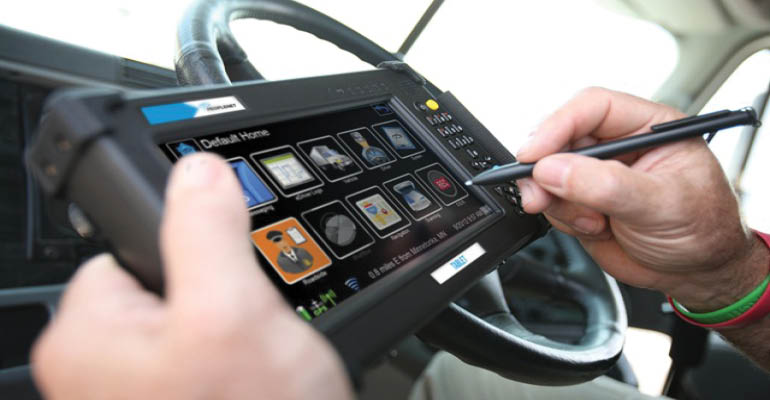The ability to collect driving data through smartphone technology can be a game changer for fleets and independents alike.

Improving safety is one of the biggest benefits of today trucking telematics systems, argues Sam Madden, the chief scientist and a co-founder of Cambridge Mobile Telematics or “CarTel.” Sam Maddien is also a professor of computer science at the Massachusetts Institute of Technology (MIT) and the director of BigData@CSAIL, an industry-university data management collaboration.
The cost of crashes to U.S. fleets topped $47 billion in 2013, $8.4 billion of which was a result of distracted driving, according to the Network of Employers for Traffic Safety(NETS).
While telematics has traditionally been used for monitoring vehicle location and travel duration, recent advances have made it much more accessible, and it promises to be critical to the future of fleet management – especially in terms of monitoring and improving driver performance.
Building on popular telematics solutions deployed by millions of personal drivers, some telematics providers are adapting the technology to offer commercial drivers, truck owners, and insurers a complete management program to improve employee safety, reduce the number of accidents and claims and increase operational efficiency and performance.
The ability to collect driving data through smartphone technology is a game changer for trucking and makes improving driver behavior – by reducing distracted driving and other risky behaviors – easier and more effective than traditional solutions based on plug-in or hard-wired devices.
Particularly attractive are battery powered wireless Internet-of-Things (IoT) “tags” that work with a smartphone. Such “tags” work with any vehicle because, as they are typically attached to the windshield, there’s no concern about compatibility – a common drawback with plug-in devices.
Truck owners should expect similar benefits as those seen by automotive insurance companies and motorists. For example, using data from nearly one million drivers, we found that on average, motorists using a smartphone telematics program reduced distracted driving incidents by 35% and hard braking by 20%, after just 30 days of use.
That data can be of immense benefit when it comes to negotiating commercial insurance prices. Truck owners, underwriters, actuaries, and product managers can use telematics data to determine scoring criteria, create pricing structures that lowers rates for the best drivers and identify improvement opportunities for the riskiest ones.
It’s a win-win on both sides of the table.
Telematics can also play a major role in helping truck owners leverage the real-time data to take operations to a new level. A few of the most effective management practices we’ve observed include:
Providing fleet drivers trip-by-trip feedback and insights on driving behavior and performance (including at-risk speeding, phone distraction, hard braking and more) to spark improvements.
“Gamifying” safe driving to motivate individual drivers and teams to compete for better scores, badges, prizes and bonuses.Using advanced analytics and machine learning technology to capture and convert risky driving activities into actionable insights, scores and performance feedback.
Of course, those practices can be combined with traditional management approaches like vehicle, driver and location-based tracking and history to give truck owners more transparency and control.
The biggest incentive, though, is that truck owners should take-up telematics before it takes them up. We expect the number of telematics-equipped truckers to significantly rise due to the Federal Motor Carrier Safety Administration’s (FMCSA) impending electronic logging devices (ELD) mandate.
An ELD automatically synchronizes with a vehicle engine to capture and record information from each drive. And most telematics solutions meet the requirements of the ELD rule, which takes effect December 18.
(To provide drivers and motor carriers with more details about the mandate, FMCSA put together this ELD guide).
The bottom line: truck owners can do the bare minimum to comply with the upcoming regulation, or utilize the opportunity to adopt a solution that goes well beyond simple compliance to deliver tangible business value. With substantial safety and business benefits in addition to regulatory mandates, integrating telematics into your trucking operation is a no brainer. It’s time to ramp-up the evolution – to reduce costs to your business, improve driver safety of your drivers, and help save some of that $47 billion lost to crashes.
About the Author(s)
You May Also Like


